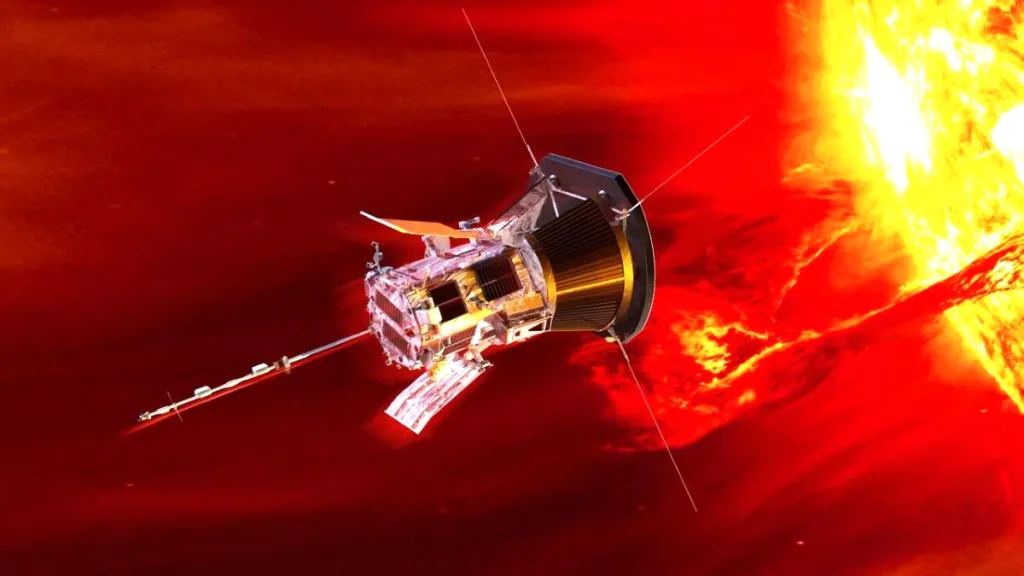Aditya-L1, named after the revered Hindu deity representing the Sun, Surya, is a remarkable coronagraphy spacecraft developed by the Indian Space Research Organisation (ISRO). Positioned at a strategic point 1.5 million km from Earth, in a halo orbit around the L1 Lagrange point between Earth and the Sun, Aditya-L1’s mission is to study the solar atmosphere, solar magnetic storms, and their impact on our planet. This article delves into the history, objectives, significance, and potential discoveries of this groundbreaking mission.
Table of Contents
History of Aditya-L1:
The conceptualization of Aditya-L1 dates back to January 2008, when the Advisory Committee for Space Research first discussed the idea. Initially envisioned as a small 400 kg satellite in a low Earth orbit (LEO) with a coronagraph, the mission’s scope evolved over time. In its present form, Aditya-L1 is a comprehensive solar and space environment observatory stationed at Lagrange point L1. As of July 2019, the mission had an allocated cost of ₹785.3 million, excluding launch expenses.
Mission Objectives:
Aditya-L1 boasts a diverse range of scientific objectives aimed at enhancing our understanding of the Sun and its influence on Earth. Key mission objectives include:
1. Dynamics of Solar Upper Atmosphere
- Study the Chromosphere and Corona.
- Investigate Chromospheric and Coronal heating.
- Examine the physics of Partially ionized Plasma.
- Analyze the initiation of Coronal Mass Ejections (CMEs) and Flare Exchanges.
2. In-situ Particle and Plasma Environment
- Gather data for the Study of Particle Dynamics from the Sun.
- Explore the Physics of Solar Corona and its Heat Mechanism.
- Determine Coronal and Coronal Loop Plasma properties: Temperature, Velocity, Density, and Dynamics.
3. Solar Eruptive Events
- Trace the sequence of processes at multiple layers (Chromosphere, Base, and Extended Corona) leading to Solar eruptive events.
- Investigate Magnetic Field Topology and Measurement in the Solar Corona.

Significance & Potential Discoveries:
Aditya-L1 holds immense potential for scientific breakthroughs in solar and heliophysics. Some of the major contributions it may make include:
1. Coronal Heating Mechanism
Aditya-L1’s instruments, such as the Solar Ultraviolet Imaging Telescope (SUIT) and the Visible Emission Line Coronagraph (VELC), aim to unravel the mysteries of the coronal heating problem. By studying the dynamics and composition of the corona, scientists seek to understand why it is hotter than the Sun’s surface.
2. Space Weather Prediction
Understanding the Sun’s behavior is crucial for predicting space weather events like solar flares, CMEs, and solar energetic particle (SEP) events. Aditya-L1’s data will enhance space weather forecasting, aiding in the protection of communication systems, satellites, and power grids.
3. Solar Wind and Magnetic Field Studies
The mission will provide a comprehensive view of the solar wind and interplanetary magnetic field, refining our understanding of their behavior and interaction with Earth’s magnetosphere.
4. Understanding Earth’s Climate
Aditya-L1’s observations of solar radiation’s impact on Earth’s upper atmosphere can contribute to climate research, helping differentiate natural and anthropogenic factors in climate change.
5. Comprehensive Solar Atmosphere Imaging
By capturing multi-wavelength observations from the photosphere to the corona, Aditya-L1 will provide insights into the complex processes governing the Sun’s behavior.
6. Origin and Dynamics of CMEs
Studying the initiation and evolution of CMEs can lead to improved models for predicting their occurrence and effects, aiding in space weather forecasting.
Successful Launch:
On September 2, 2023, at 11:50 IST, the Aditya-L1 spacecraft was successfully launched aboard the Polar Satellite Launch Vehicle (PSLV-C57) from the Satish Dhawan Space Centre (SDSC) in Sriharikota. The launch garnered significant attention, with thousands of spectators present at the launch site and a national television broadcast.
Following a 63-minute and 20-second flight, Aditya-L1 was injected into an elliptical orbit around Earth at 12:54 IST, marking a pivotal step in its journey. The spacecraft will undergo a series of orbital maneuvers before reaching its designated orbit at Lagrange point L1 approximately 127 days after launch.
Conclusion:
Aditya-L1 represents a significant leap in India’s space exploration efforts, offering the potential for groundbreaking discoveries in the field of solar and heliophysics. As it embarks on its mission to study the Sun, its influence, and its impact on our planet, the world awaits the valuable insights and data that Aditya-L1 is poised to provide.